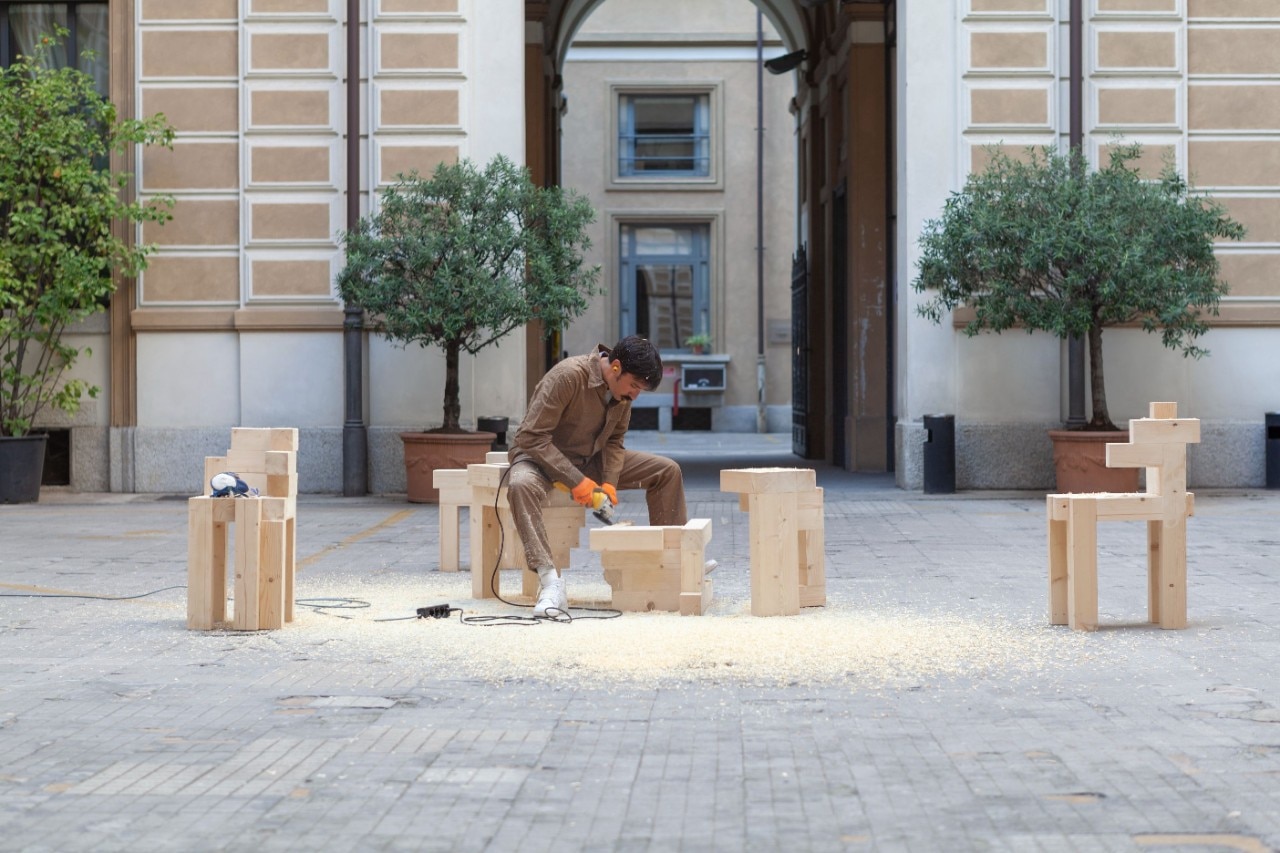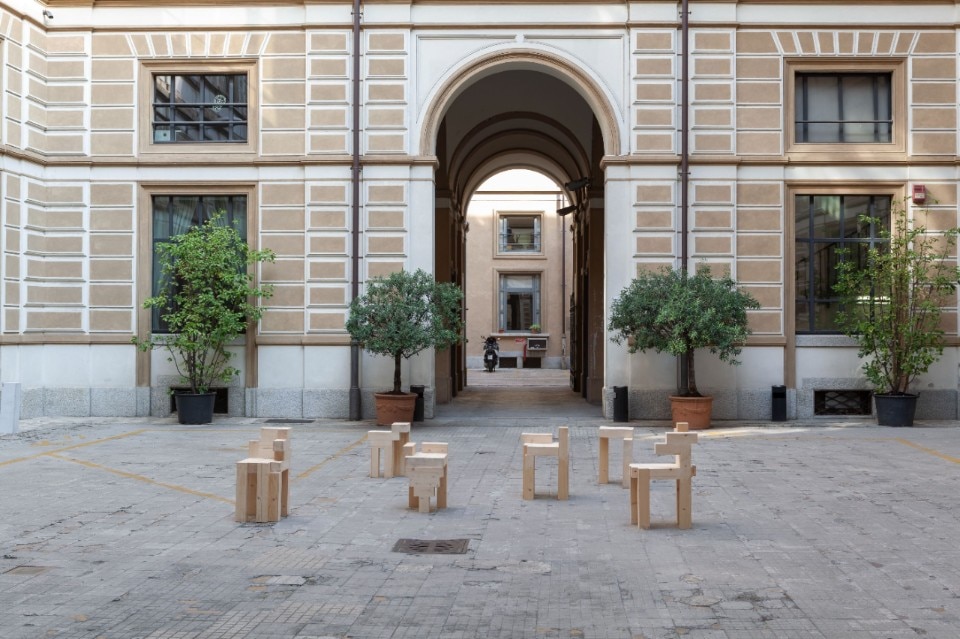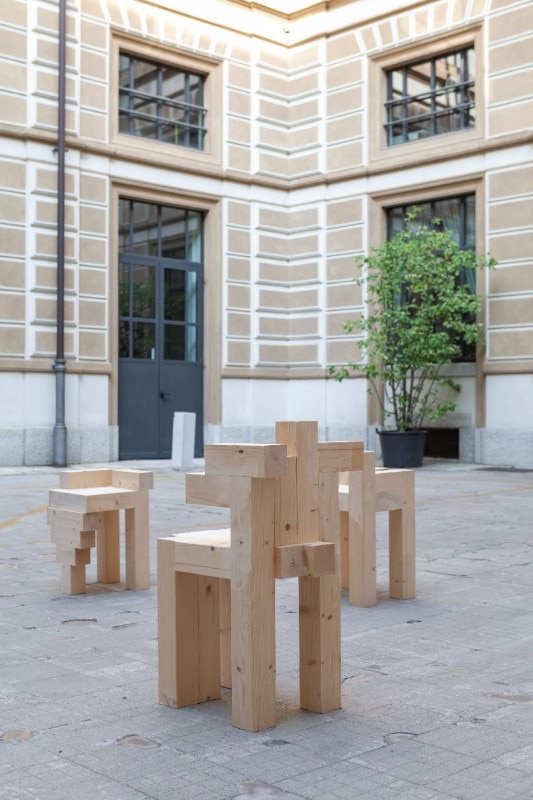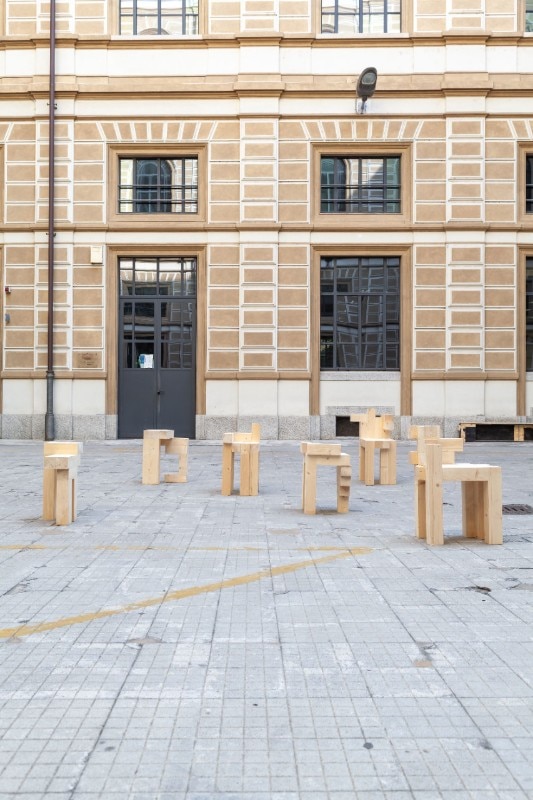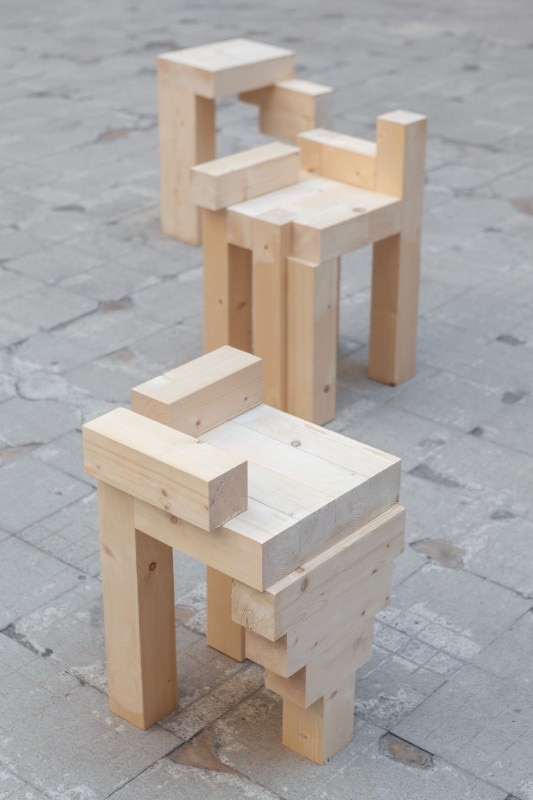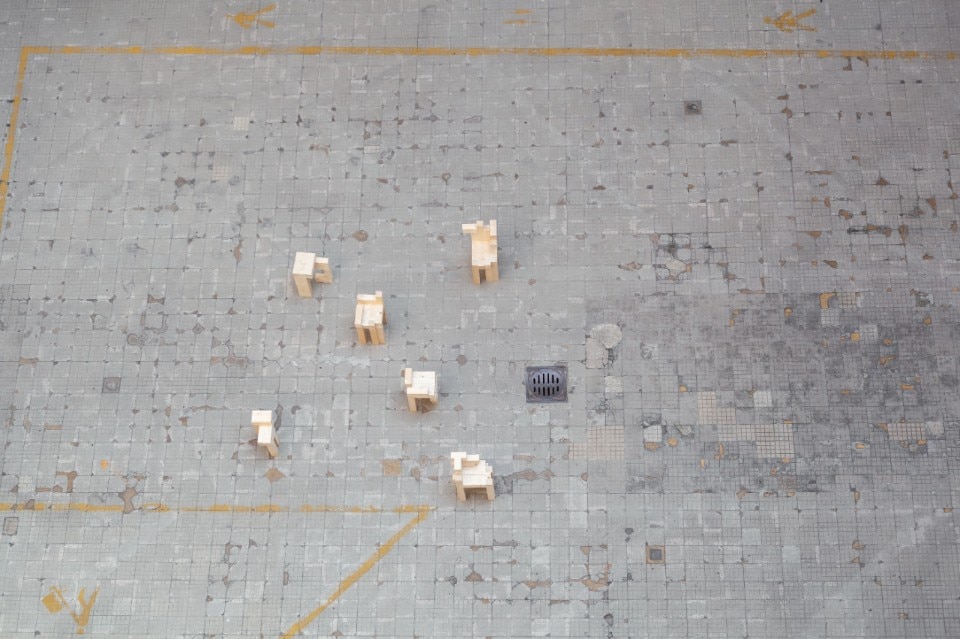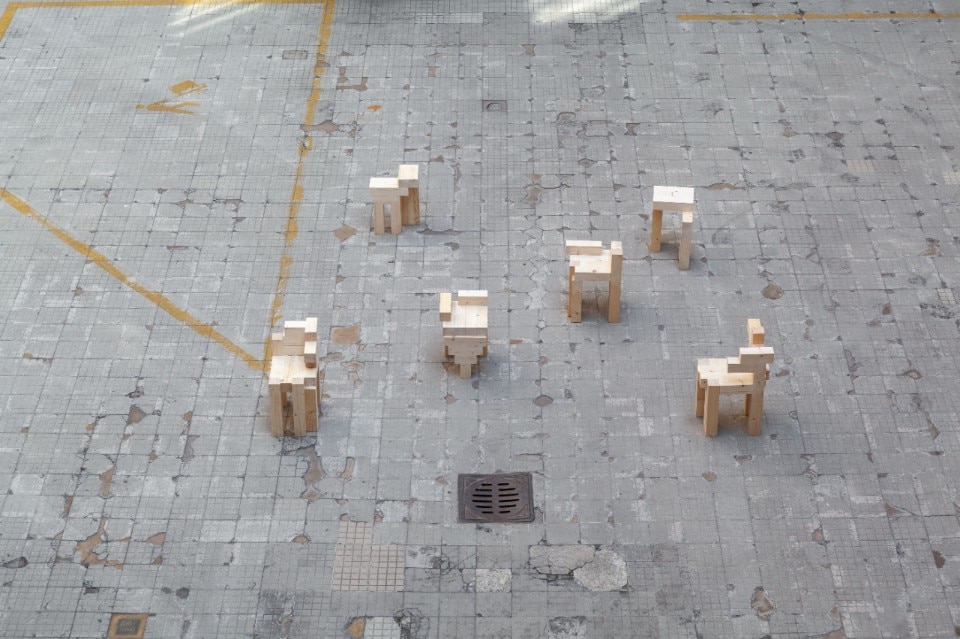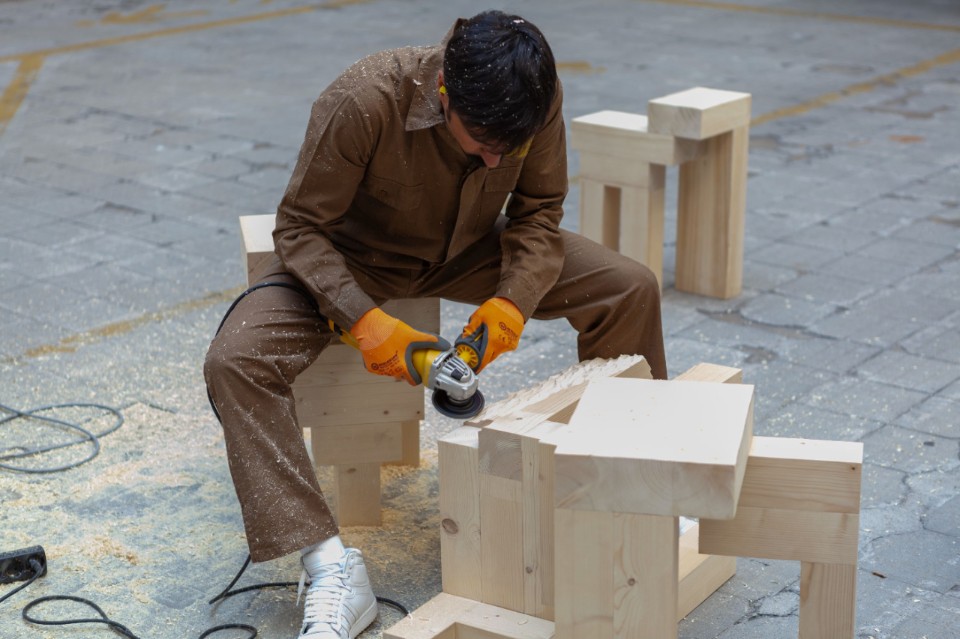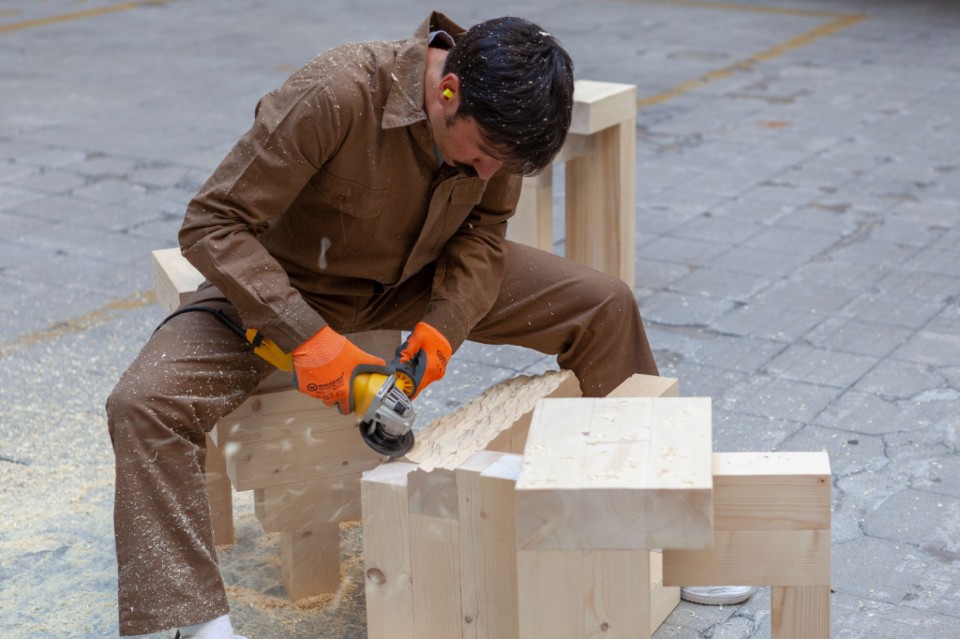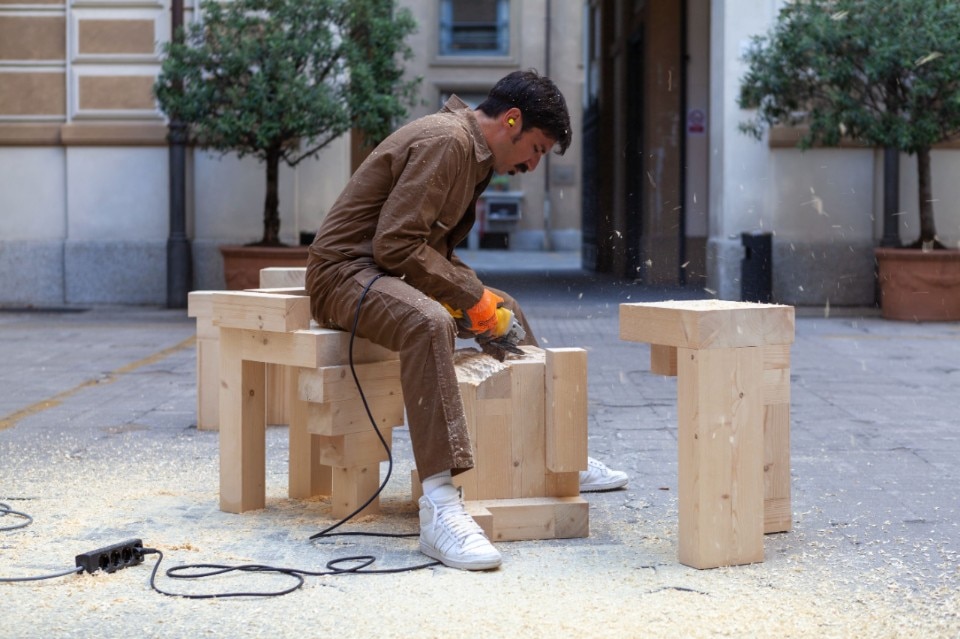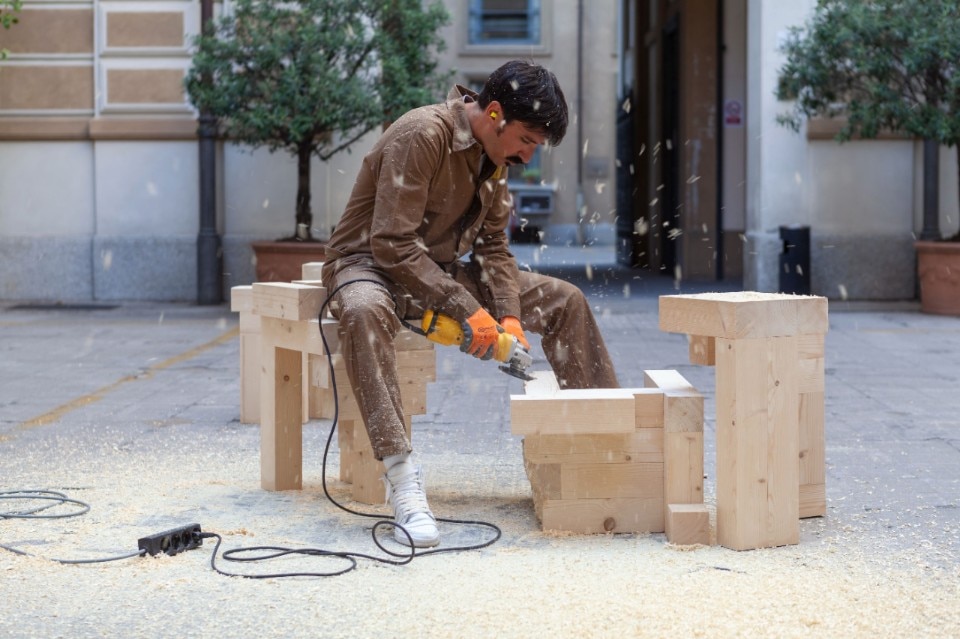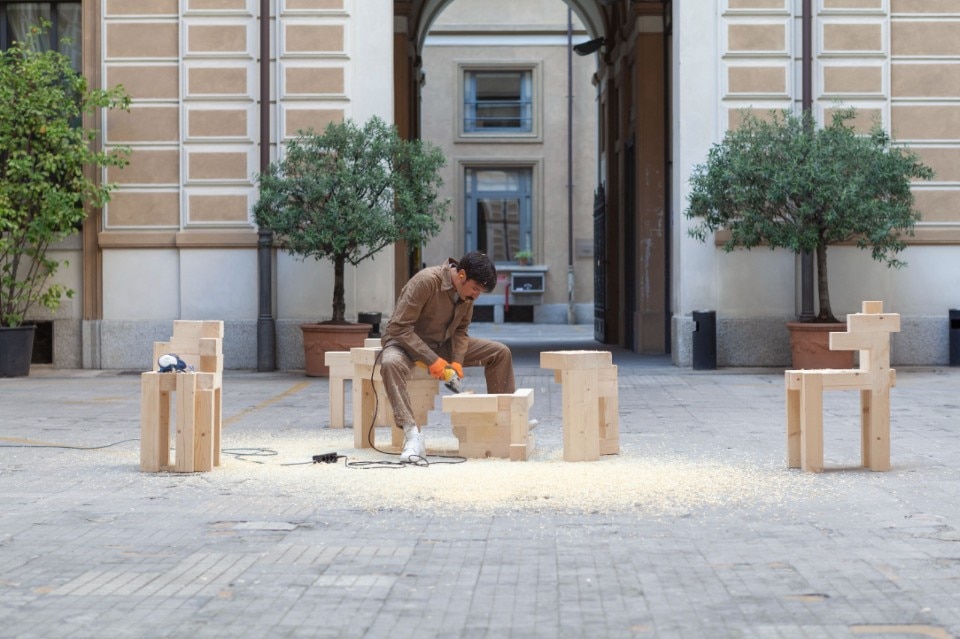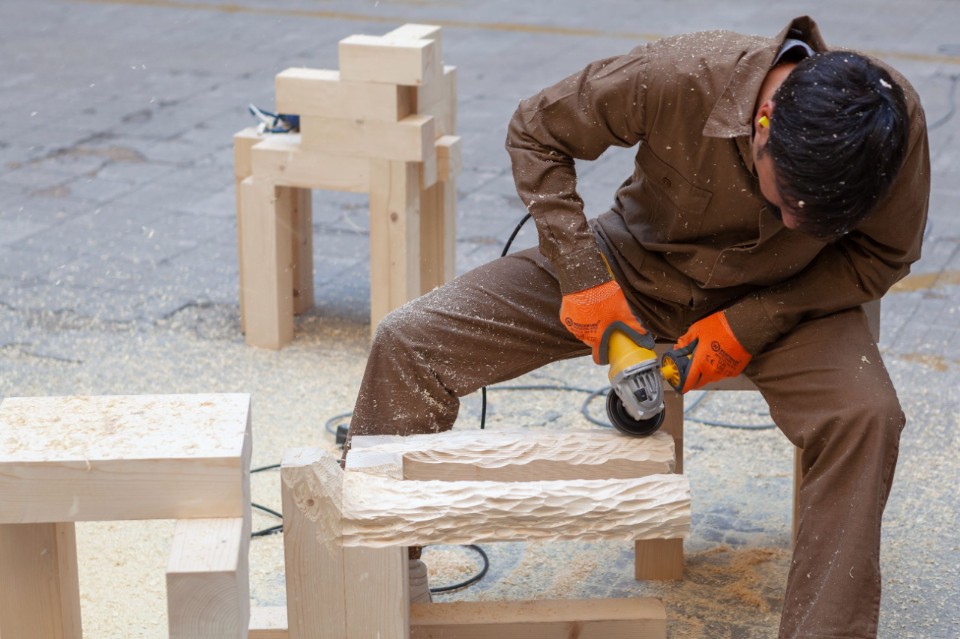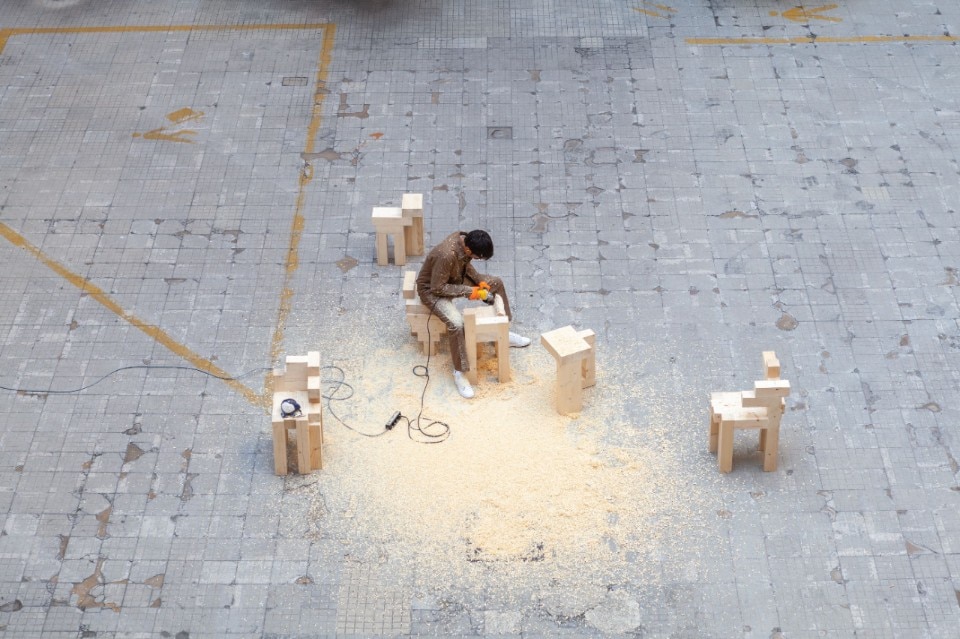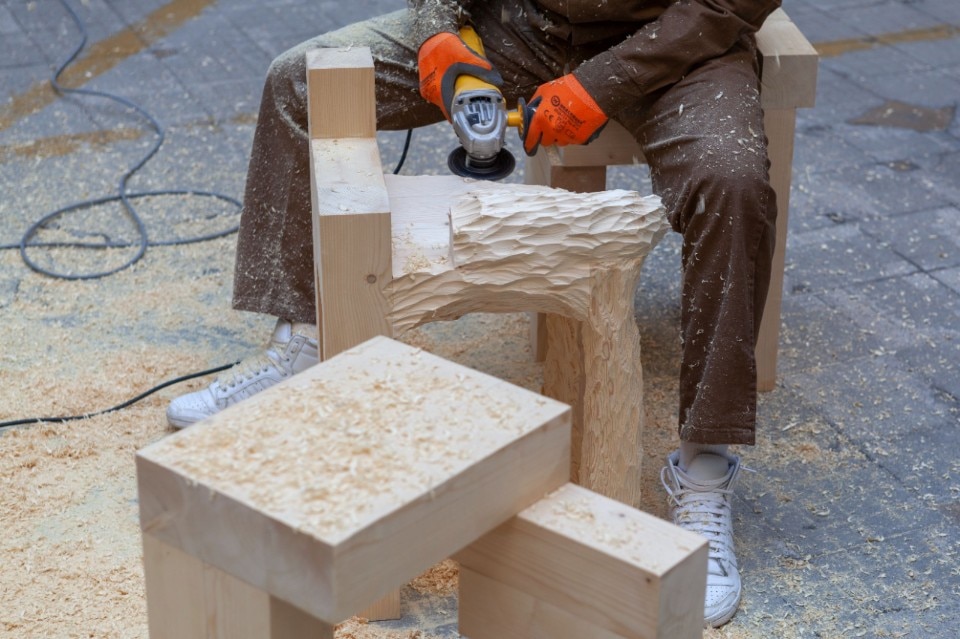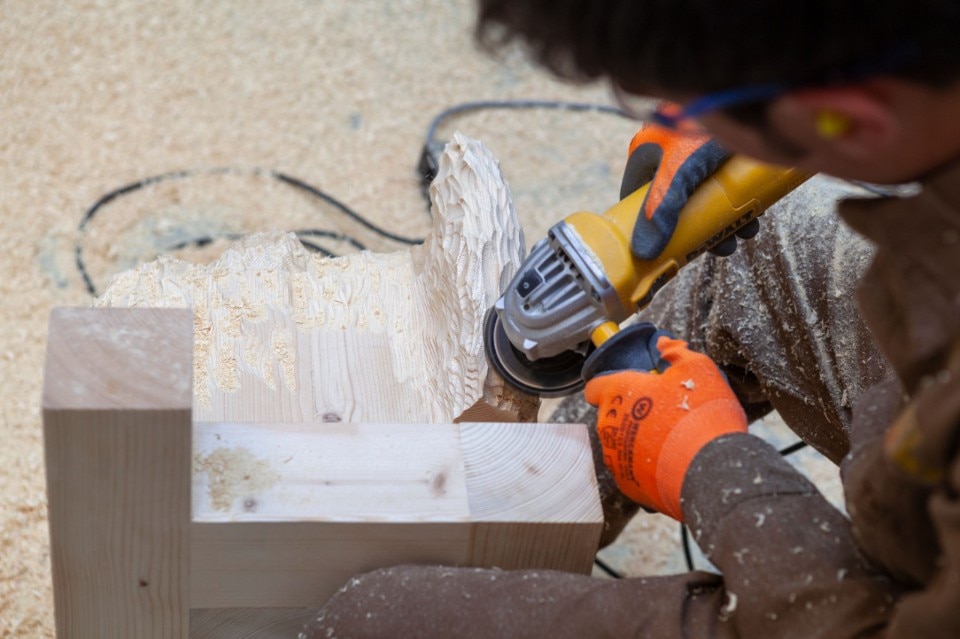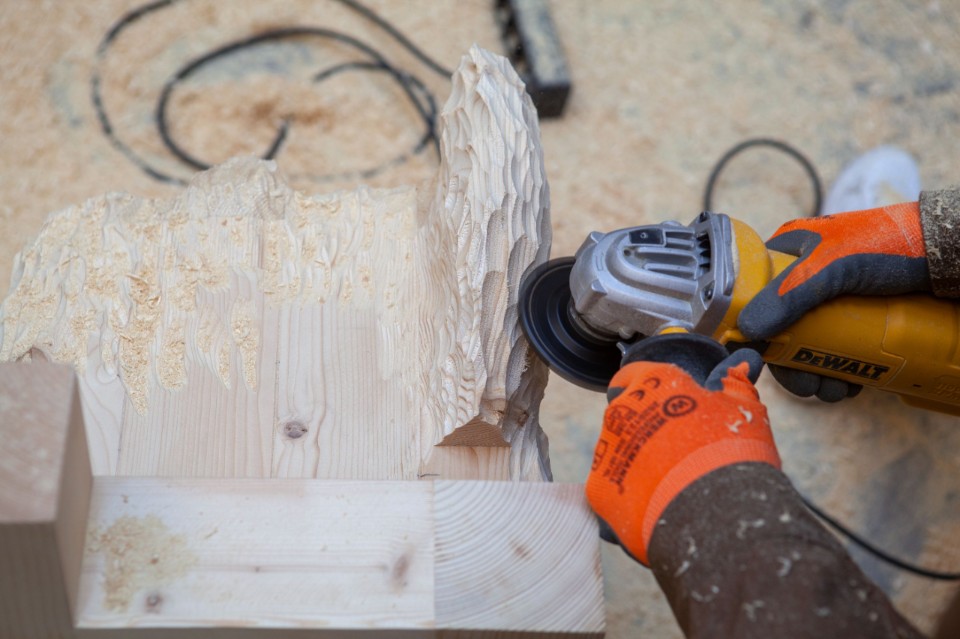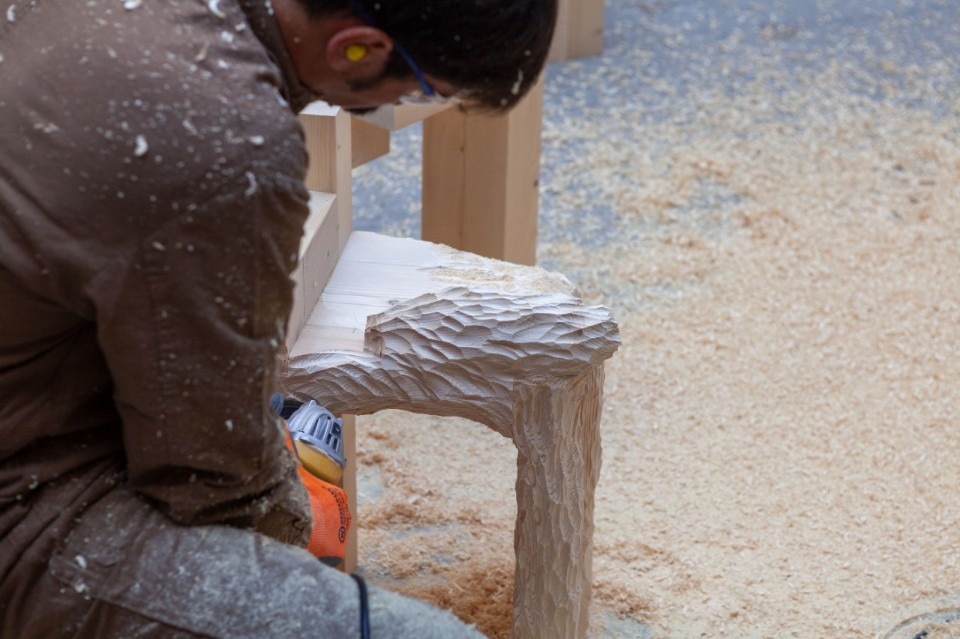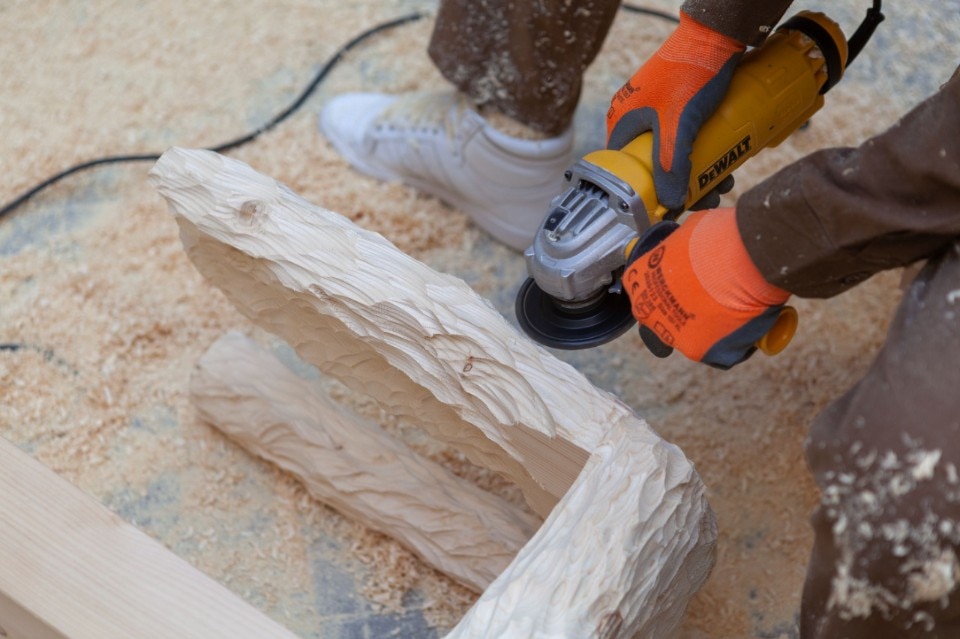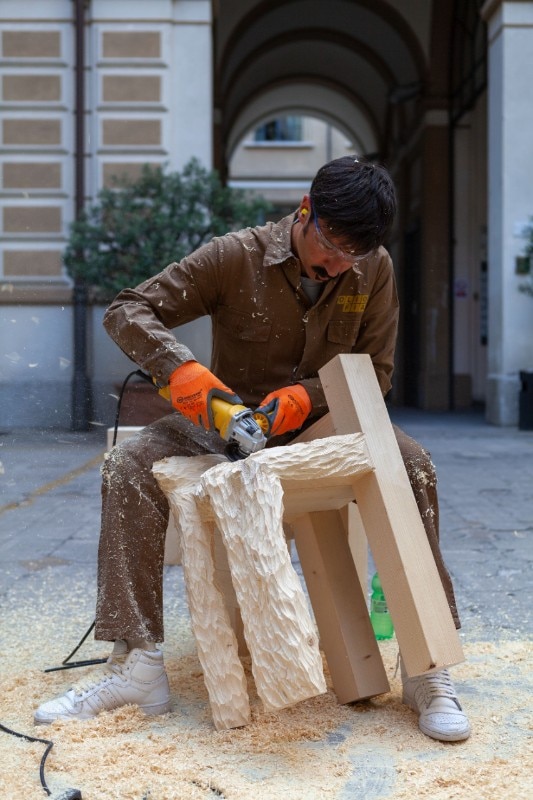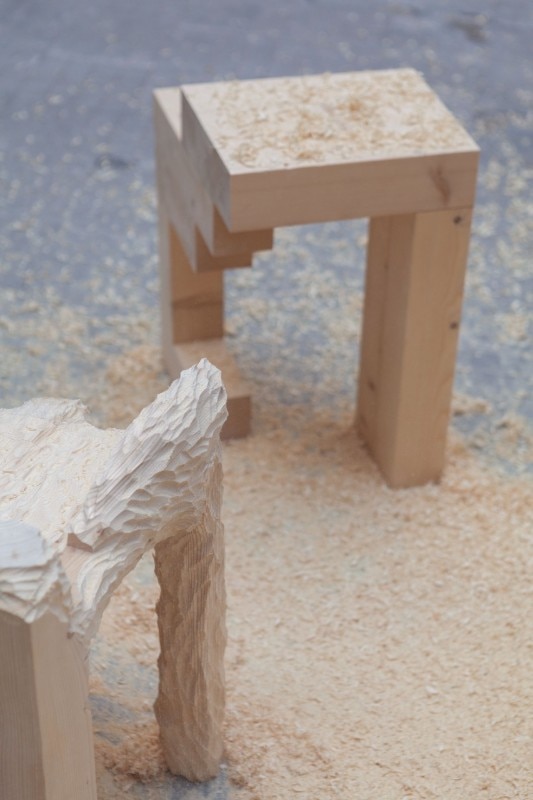At Fuorisalone 2021, Francesco Pace, aka Tellurico, presented the performance Untitled 1B, which is the sequel to Untitled 1A (2020). Both performances were commissioned by 5Vie Milano and supported by the Netherlands embassy in Italy. One could watch him in the courtyard of the SIAM (the old Arts and Crafts Encouragement Society founded in 1838) as he sculpted blocks of wood to create a collection of wooden objects. This performance fully sums up his approach (which he defines as multidisciplinary) and recent reflections that he made during the lockdown. It is both performance and narrative; it talks about the time and work of the designer and the craftsman, about the process often hidden behind a beautiful object, and about sustainability. All of these topics are very important to the designer originally from Pozzuoli (Naples) who, however, chose Holland to launch his career and who has been returning to the Fuorisalone since 2018, when he presented the project for the Salvatore Lanteri Gallery, combining lava from the Campi Flegrei and porcelain.
What were you doing in the courtyard of a historic building in the heart of the 5Vie district?
I was working on an idea that partly came about during the lockdown. In Holland, we had three lockdowns and the hardest one was the last one - five months spent indoors. During that time, time became extremely flexible: there were days you could do a thousand things, and others you went to sleep and felt like you hadn’t done anything all day. So, I started to think about the meaning of time. I thought that, in the end, time is the only thing I can sell. It’s the only thing I really own. Whenever a client or a company asks me to do something for them, the only way to quantify it is with time. It is a way to measure the value of what I do and of the objects themselves. I wanted to express this relationship between time and the craftsmanship behind an object. When you look at an object, it is difficult to give it a price, a value, other than a sentimental one. When I tell you that it takes 300 hours to make it, you understand. I wanted to convey the idea that objects are more than objects, that there is a complex work behind them, not only in terms of craftsmanship but also in terms of time. It is also an answer for those who ask me to complete a project in a week.
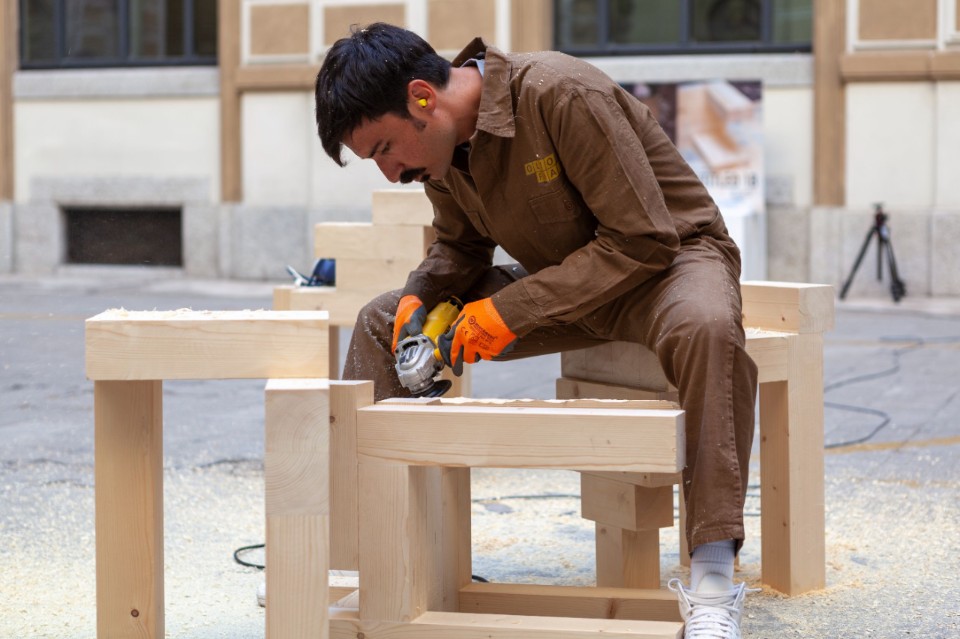
How do people reacted when they saw you working?
People are always very attracted by dust, spurts, shavings. And they are very interested in what they don’t understand: that’s also why they approach it. They are also much more interested in the process than the product. The photo of a beautiful object, among millions of photos, is soon forgotten, while the process is more intriguing.
It is interesting to see what the starting point is.
Absolutely. My idea is that objects are “unfinished”. They remain in this “meta” state where the object was something, is becoming something else, but is still neither.
The photo of a beautiful object, among millions of photos, is soon forgotten, while the process is more intriguing.
Would you define yourself more as a sculptor or as a craftsman?
Is there a difference? Aren’t all craftsmen sculptors in some way? Mine is a work that comes close to sculpture because there is a solid block and I remove material. That is perhaps the one thing sculptors and craftsmen have in common.
We were saying that the idea for this performance came about during the lockdown. Was it a period that changed your way of working on a project in some way?
I believe that if the pandemic didn’t change us, then we have a problem. That is a fact. What has perhaps improved is that people are more open not to meet in person and still carry out a project together. I have worked a lot alone in the studio, with my assistant, and remotely with clients. I never like extremes though. Coming back here, performing, meeting people, it’s good for the soul.
Why did you choose to work in the Netherlands?
After studying at the Politecnico di Milano, I moved to Holland to work in a studio (Formafantasma, ed.). After a year, however, I decided that I preferred to work on my own. I joined the Design Academy Eindhoven, got a master’s degree and then stayed there. I had found my place. It was more a circumstance than a decision. For the moment I live there, but I am planning to escape, I would like to return to Italy.
But don’t the Netherlands offer more possibilities than Italy to a designer, especially at the beginning?
Perhaps at the beginning, but at a certain point, you always have to go back to Milan. You have to stay for some time in Milan to gain a certain credibility, even though credibility is actually what you create for yourself rather than what is attributed to you by a place or people. It is as if Milan is calling me, there is always someone who has seen my work and wants to meet me... In Milan. The problem with Italy is that we are a bit too internationalist. If something happens in our country it is relevant; but if it happens in another country, it is more relevant.
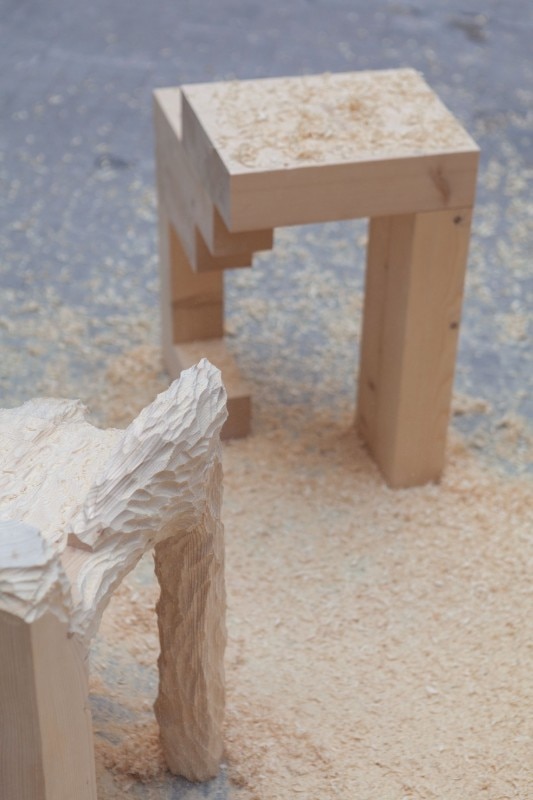
Who are your main clients?
I have worked with a few galleries, for example, the CampDesignGallery in Milan, and I still work with Mint in London and, as of this year, the Emma Scully Gallery in New York. This year I was contacted by a company, but my clients are mostly collectors. I then work with museums, such as the Vanabbe Museum, where in 2019 I created a project for the JUNK exhibition by GeoDesign, MADRE in Naples, the Brohan Museum in Berlin. I would define my work as multidisciplinary because the object is not the only medium, indeed sometimes the object is too recapitulatory, it does not tell the whole story. For this reason, I feel more at ease with installations and performances.
In Milan, you are presenting a performance that includes a narration of your work.
Narration is always part of my work and of the projects I try to develop. Telling a story becomes almost a requirement of the project itself. We are surrounded by products and it is important to tell the story behind them.
...the quality of the project is fundamental, and it is also a question of sustainability.
Storytelling also helps to create affection for an object, and in the end, it makes production more sustainable, because things stay with you for a long time.
What is certain is that you have to buy less and better, this is the message we must convey through handmade objects.
What technique are you using?
The idea for this performance is that it must have a certain essentiality. There is a solid block, and this solid block will become something else. I use the technique of wood-carving. My only tool is an angle grinder with a metal cutoff wheel. I can create a texture, but I can also create a polished surface. Each object will be different from one another.
Have you already decided what they will look like or will you decide as you proceed?
In sculpture, as in this technique, there is always space for improvisation. I have decided the type of objects I want to create beforehand - two small tables, two stools and two chairs - there is a design of the solid block, that is, how the objects are constructed and fit together, and of the use of a single module (they are all 100 x 100 laths) which, when put in different positions, create various objects. The unknown is always part of my work. Before doing anything, there is a design part and a research part. But then, when I’m working, I understand in the moment what the right decision to make is.
How did it feel to be back at the Salone after all this time?
I was thinking about it this morning. It was difficult, logistically speaking, to organise it in September, because before that there’s August, so we worked all summer. However, it is stimulating: a bit like recharging the batteries. It’s something we needed: design needs a certain level of human contact, to meet, to see each other, to understand what you do and when you do it. And it’s a good feeling, I’m really happy to be here. I’ve noticed that there’s less stuff, but everything is more intentional. I find that people communicate more with each other, you don’t just meet by chance. I hope this will remain the case in the next editions of the Salone. In the last editions, there was just too much stuff. A selection would help the show itself. It is important to keep the level high because if the quality decreases, everyone is affected. I don’t want to sound elitist, but the quality of the project is fundamental, and it is also a question of sustainability. When I design, I have a responsibility: towards the object, the user, the production, logistics. If I continue to work with marble from Lebanon, glass from Murano, or textiles from India, I end up creating a system that suffocates itself. This is something to think about: where do I get the materials, where do they come from, how much do they cost, can I make them where I am? And then, we don’t need millions of pieces of every object, we need to make only what we need.


